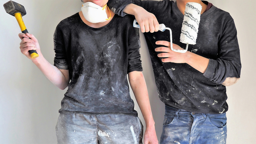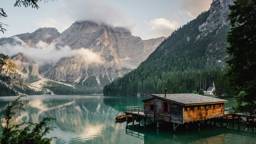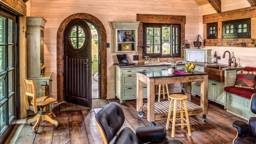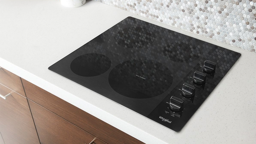
Slowly tiptoeing through the woods, your faithful four legged friend by your side, both trying to stay as silent as you can; you've just spotted a deer through the trees. For some, hunting is a once in a lifetime experience, but for most who try this adventurous sport, it soon becomes a hobby. The incredible views, the exhilarating feeling, the stories and experiences all bond generations and friends together.
Having somewhere to go at the end of the day once the hunt is over, to sit and reminisce with friends about the day, and to enjoy a delicious feast is all part of the adventure when you're an avid hunter. If you're thinking about building your own hunting cabin, here are some design tips shared by log cabin and outdoors enthusiast, David Woods.
Location
One of the most important things to consider before starting to design a hunting cabin, is the location. You need to make sure it is in an area that has an abundance of animals to hunt, and that the cabin is accessible to you and your friends all year round. One of the most popular places that people choose to build a cabin is in the woods due to the amount of wildlife which naturally inhabit these areas.
Hunting Cabin Size
Most hunting cabins are designed to be small and blend into the surrounding forest, but you can build your hunting cabin based on a few different factors including the size of your plot, the amount of people your cabin will need to sleep and your budget. Most people choose a one or two bedroom cabin, but some opt for a larger three bedroom cabin which has plenty of space for some visitors. To figure out exactly what size cabin you'll need, you also need to think about the equipment you and your friends or family will be using. Do you need storage racks for your rifles, or will you need cupboards for your knives, bows and arrows?If you have children, you'll need to factor accessibility into your design plans to ensure they are out of the reach of your children either high up, or in a locked cupboard.
Orientation of the Cabin
The orientation of the cabin will depend on what the typical weather is like in the location you're building. If you're building in a very hot area, position the cabin so that the front door and most of the windows are facing north. If you want to use the natural sunlight to warm the cabin up, you should position it facing south, with as many of the windows facing south as possible too. Try to make the most of natural gradients in the land, and other important landmarks such as trees and bodies of water. It’s important to consider all of these aspects before you start to plan your property, because they will all impact the design.
Cabin Exterior
Most hunting cabins tend to adopt the A-frame shape, perhaps for the simplicity and eye-catching aesthetics, but you could choose any shape cabin from a small single story cabin to a modular two story cabin. One of the most essential parts of a hunting cabin is a porch. Somewhere to sit outside and enjoy the sunset after a long day out hunting.You might choose to have a simple small front porch, or perhaps a wrap around porch to make the most of the sun at any point in the day.
Utilities
Will you need electricity, gas and water? Or do you just want to build a simple cabin? Often an off grid log cabin will be a much cheaper option.If you opt for an off-grid cabin, you'll need to make sure that you build it close to a water source, and you'll probably want to include a traditional, rustic wood burning stone which you can use to keep warm and cook food on. If you want to ensure you are connected to the grid, consider whether there are utilities available to connect to, and the ease of connecting to utilities. If there are not any utility lines running close by to your property, it can often be a very costly process to connect to the grid.
Furnishings
When it comes to designing the interior of your cabin, this is where the fun begins! Most hunting cabins opt for a rustic and traditional interior, with a comfy and relaxing feel to the cabin. In particular, you’ll need to consider how many people will regularly be sleeping and staying at the cabin. This will help you to determine how many beds you’ll need, how many people you’ll need to make room for around the table, and whether you’ll need to make rooms open plan. There are plenty of different choices for the sleeping area, from regular beds to pull out couches or even bunk beds and hammocks. You’ll most likely want to leave plenty of wall space to hang your trophies too!
Will You Start Building Your Hunting Cabin?
Hunting cabins don’t just provide shelter, they offer a place where memories can be made throughout generations of families. Their walls can tell stories with the trophies and photos. While most people picture a small tiny-home as a hunting cabin, they can be larger, more traditional looking log homes which are elegantly designed. Whatever you envisage your cabin to look like, with the right amount of planning and design, it is fully achievable if you have a clear vision in your mind.
David Woods is an avid outdoorsman and log cabin enthusiast. He has been a carpenter all of his life, and has over 30 years of experience in the woodworking and home renovation industry. He is the editor of Log Cabin Hub, and now shares his knowledge of building and buying log homes.










